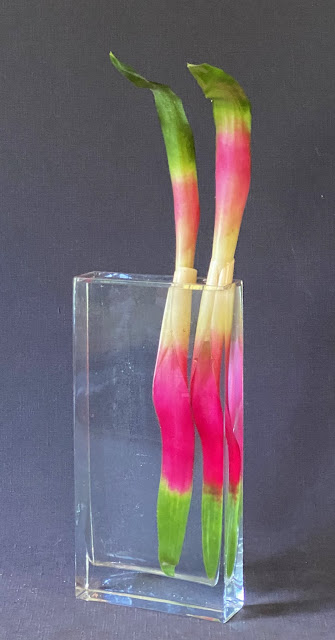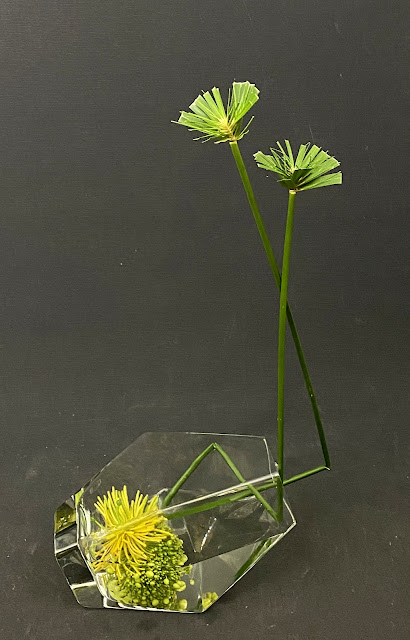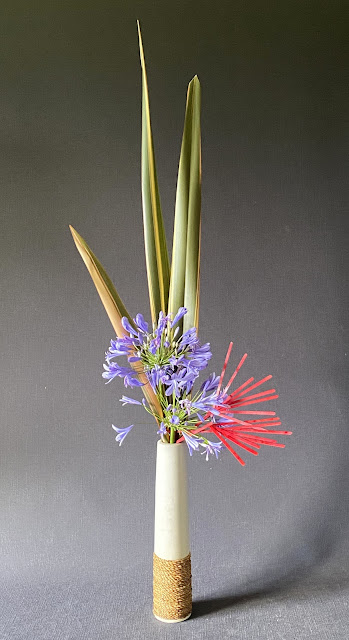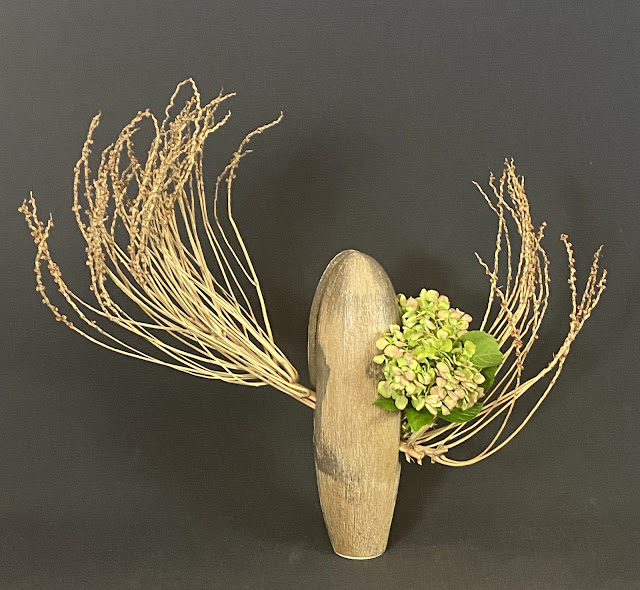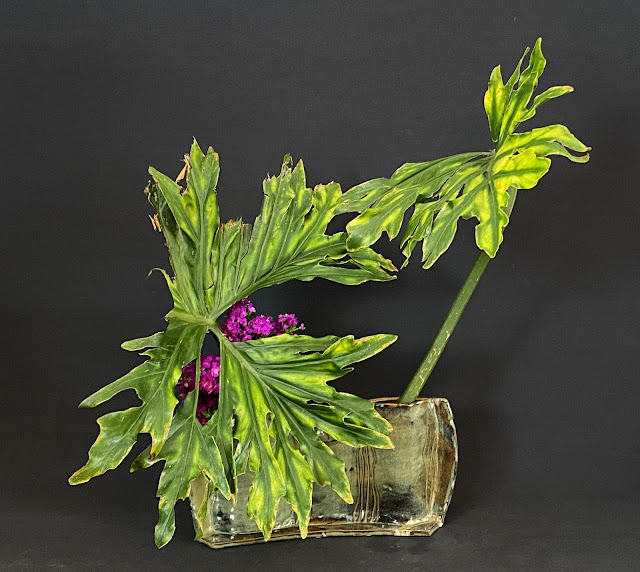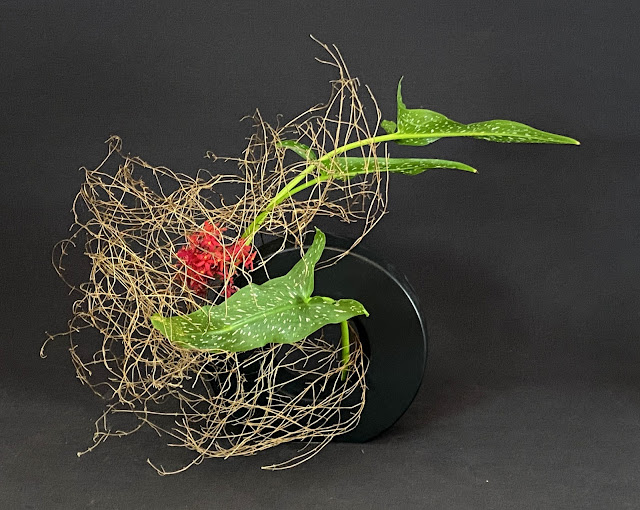Hello all,
The last few weeks, since my son and his family left us and returned to their home I've been addressing certain chores that I've neglected for far too long. One of those chores was to have my studio painted. The painting part was easy enough because we employed a painter to do it but Sam and I had the Herculean task of removing the hundreds of containers, shelves, tables and paraphernalia that I accumulated for decades. And, then, I had to put it all back, after cleaning and culling as much as the horder in me would allow. I, also, had to go through several boxes of paperwork, throwing away the bulk of it but, in the process, rediscovering little treasures.
In order to tidy up my studio, some things had to go to the storeroom, which is in a much worse state than the studio. I'm still in the process of clearing up down there, which is a really horrible task but, here too, I,m discovering treasures I'd completely forgotten about. One of them was the palm inflorescence in the wall arrangement, above. Although it is quite big now, it was even bigger and had to be reduced for balance. The hydrangeas are the only blue ones left and I had to use all 7 flowers because of the size of the arrangement.
I made this arrangement in mid January and, I have to confess, it's the sort of arrangement that appeals to me quite a lot. So I kept the structure and replaced the flowers as they died. Three weeks later, the umbrella grass stems dried and changed colour. It now had a different, more subdued look, so I replaced the gloriosa lilies with white hydrangeas that are starting to turn green.

In my last post I made an arrangement that I called 'Lazy Ikebana'. The flowers of the Port St John creeper died quickly and, rather than put away the structure, it was easier to make another arrangement with it. I wanted to use something up high, so it had to light. I have an abundance of dried agapanthus heads, which I sprayed pink. But, then, I remembered that I don't like pink, so I re-sprayed them blue. I'm not entirely sure I like the blue either but it's better than the pink. Now, I had an arrangement of only dried materials, which makes me uncomfortable. I have to have some fresh material, otherwise, I feel the arrangement looks dead. In the first photograph I used two fresh agapanthus heads but I was not happy because there was not enough contrast between the blue and the green. I then replaced them with three, fresh, white agapanthus, the stems of which I put in water vials.


Amongst the 'junk' in my studio I found a couple of broken picture frames and I debated weather to throw them away or use them. The latter prevailed. I created one rectangular and one triangular shape intertwined. The slate topped container was made by my brother-in-law, Peter who, clever man that he is, weighted it down with lead to give it more stability. The crocosmia are a soft contrast to the sharp lines of the structure.
For Lunar New Year I made three celebratory arrangements for our neighbours, all three families being Chinese. They, in turn, brought us delicious, traditional Chinese goodies. Every year one of them brings us freshly steamed dumplings and always times them to be ready around dinner time.
In the arrangements I used gold and red colours, as they appear to be popular in Chinese culture. Below is one of them.
My student, Mary, is up to the exercise in Book 3 - 'Colours in Contrast'. She used blue agapanthus and orange dahlias and crocosmia, the two colours being on the opposite sides of the colour wheel.
Bye for now,
Emily







